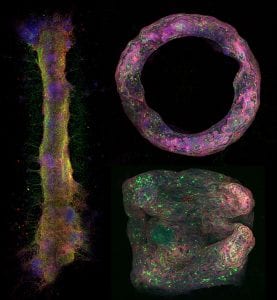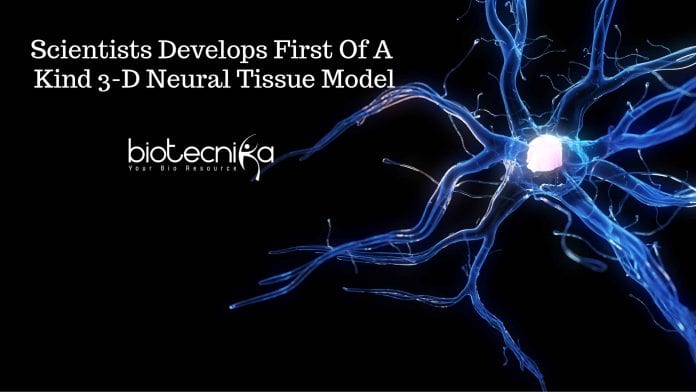3D Neural Tissue Model
The University of Illinois Researchers has successfully used stem cells to engineer living biohybrid nerve tissue to develop a 3D Neural Tissue Model. The University of Illinois Researchers hopes to gain a better understanding of how the brain and these networks work.
Gelson Pagan-Diaz-Diaz, the lead researcher, linked the 3-D model neural networks to a computer processing unit, which provided the basic principle to these supercomputers.
Pagan-Diaz said 3-dimensional tissue consisting of neurons could give scientists the ability to develop tissue models for drug screening as well as processing units for biological computers.

The brain is challenging to study in living humans. Being able to understand these networks develop using a 3D Neural Tissue Model promises to give scientists a new tool to better understand it’s critical function. These 3D models will provide insights into the development of deadly diseases such as Alzheimer’s. The 3D Neural Tissue Model will also reduce experiments on animal models.
Researchers aim to design Biological Processing Units and Biological Computers similar to the brain, using this technology.
The project was funded through an NSF Science and Technology Center EBICS
- Emergent Behaviors of Integrated Cellular Systems.In this research work, the team developed neural tissue mimics that can form various shapes. The scientists then used hydrogels and fibrin to make millimeter to centimeter-scale structures that do not consist of rigid scaffolds. Due to this feature, this 3D model can be molded into several desired shapes.
Besides drug testing, the University of Illinois scientists are especially interested in being able to recapitulate the way these networks might develop learning and memory.
Pagan-Diaz added that Being able to fabricate these tissue mimics outside the body allows us to characterize and study their electrical activity in great detail.
Editor’s Note: 3D Brain Models, In-Vitro Neural Tissue Model






























